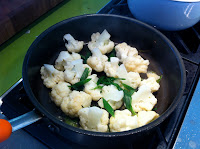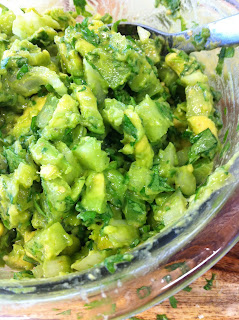Frugal & Sustainable
One of the core mantras for the current sustainable or “green” living trend is to minimize waste. Take shorter showers, start a compost bin, turn off appliances and lights when not in use, wrap yourself with a blanket instead of turning on the heater, recycle and reuse bottles and bags, etc. These are all great tips and I’m not minimizing their value, but I want to shed a glaring light to the fact that these are far from new ideas. Though not always fueled by a great conscious effort to preserve the Earth’s resources, people’s motivations for being sustainable were much more about personal survival and forced circumstantial frugality, the resulting actions were the same. I find the green movement to be a good one, but also a puzzling one and an interesting display of American industrialized wealth.
I believe it is human nature to minimize waste and value resources by making products last as long as possible, to use every last animal part to extract as much nutrition and value from it as one can, because these resources are precious and in today’s industrialized society, cost money. You see it throughout different societies and cultures in the world and through history. Most deities, who were worshipped, are fashioned after natural life-giving resources or thought to have powers to control the Earth’s precious resources that recognizable give LIFE. People give thanks to gods for water and crops or show their gratitude through prayer before killing an animal. These customs reveal how the basic human needs of shelter, water, and food were always valued and thus never wasted. It isn’t until recently and specifically in countries, such as America, where most of the vast population has these basic human survival needs met, that waste has become such a big environmental issue. Thanks to our global industrialized society and economy, people no longer have to hunt for their meat or grow their own crops. Convenience has become a modern day god. Everything you need at the touch of button or bought at the neighborhood market and the supply seems to be endless. Nowadays the ones who are most green in their living practices have become the poorer and less affluent ones in the world because in their minds, water, electricity, food, and products are still precious, hard to come by because of monetary cost. To be frugal is to be sustainable.
Coming from modest backgrounds, my family was technically already green. When my parents first moved to this country 35 years ago, it boggled their minds that many Americans had habits such as keeping the heater/air-conditioner on in their homes almost at all times. It was discombobulating that the only chicken parts they could find in the supermarkets were boneless, skinless, breasts and thighs. Where had all the other parts of the chicken gone? And the steaks! How could anyone consume a whole 8oz slab of meat at once? Once again, what happened to the rest of the cow? Where are all the bones? Water is so valuable, how is it possible for janitors to clean driveways and buildings by hosing it all down? We weren’t intentionally being green, we were just cheap and made the most out of every bit we had. Especially when it came to food.
The previous posting of a recipe for Chicken Noodle Soup, where homemade chicken stock was used, is what prompted this rant. Now let me go back to the subject of homemade stock, everyone should do it! Not only will it add so much more flavor to your cooking, it’s easy, it will save you money, and it’s being green. BONES = FLAVOR! First off, don’t be scared of where your food comes from, meaning that chicken breasts come from a chicken. Therefore, don’t be scared of the other parts of the chicken. There is nothing wrong with bones and organs and dark meat. It’s healthier for you than a chicken nugget and its tastier too. By the way, chicken nuggets are made of all the skin, bones and undesirable parts anyways. They just add a whole bunch of chemicals and flavoring then form it into a nugget and deep-fry it, does that still sound healthy to you? Chicken patties at fast food restaurants are made the same way. Meat comes from an animal; if you are willing to eat meat then you must accept this fact. To actually respect the animal that you are eating is to appreciate every part of it and not just throw out most of its body as trash. An easy way to use the bones of any animal is to make stock. One of the reasons why good restaurants’ food tastes so darn good is that they use homemade stock. Throw some chicken bones, veggies (the classic combo is onion, carrots, and celery, but I also like to add ginger), and dash of salt in a pot, add water, bring to a boil and just let it simmer. Watch a few TV shows, check on the pot and add a little more water in between shows, and voila! You have successfully made stock. Let it cool, strain out the bones and veggies, all the flavor is extracted out of those suckers so now you can throw it away. Pour into usable portions in freezer friendly Tupperware and toss in the freezer, ready to use when you need. You can do the same with pork, beef, vegetables, and seafood. Go to an ethnic market and buy a whole fish, its much cheaper than just buying the packages fillets. The market will gut it and clean it out for you. Also buy shrimp whole as well, with their heads still attached and everything. Take it home and remove the heads and shells of the shrimp, chop off the head of the fish, and throw it all into a pot with some ginger, onion, and carrots. Do the same and you have a wonderful seafood stock that you can use to make shrimp bisque, seafood gumbo, and so many other seafood stews.
Maybe instead of trying to reinstate a collective conscious to save the Earth, the green movement should also reiterate and how going green can save the common citizen tons of money. Emphasize that these resources are not just valuable to a third person named “Earth”, they are valuable to us. To our pocketbooks and add so much nutrition and flavor to our lives. To the cooks out there, we should challenge ourselves to come up with creative ways to use what we have to its fullest and extract as much flavor out of whatever ingredients bestowed upon us. This is what many people in different cultures around the world has had to do for survival and some of the tastiest signature dishes were born this way. We were fortunate enough to be born into a time and place of plentitude thus we now live in a culture of taste and unappreciated resources. I choose to counter this wasteful culture and I challenge others to do so as well. Revive the motto “waste not, want not”, into our collective mindset!


















































